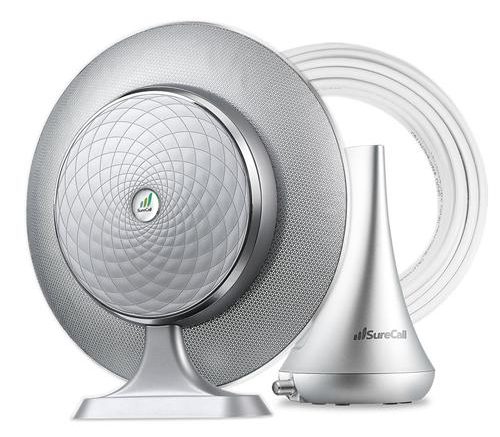About five years ago, we started seeing a whole new wave of cellular signal boosters. They were typified by the first-generation EZ4G from SureCall. The idea was that not everyone can put a cell booster’s antenna up on their roofs. These boosters were designed to work completely indoors. There were various tricks to make this work as well as traditional boosters.
The big problem is that these devices didn’t really work as well as their traditional counterparts, due to the issues with having the two antennas so close to each other, and because limited indoor reception is the problem you’re trying to solve. Putting an antenna indoors isn’t going to be the best way to solve it. Of all the promising contenders, only SureCall’s second-generation EZ4G is still around. Of course you can buy it at Solid Signal.
Why would you want an indoor-only booster?
Believe me, I get it. Maybe you live in an apartment. Maybe you just don’t go up on roofs because, you know, it’s dangerous. There are a lot of reasons that you’d want a booster that didn’t require a trip up there. You might not want to drill holes in the wall. You might not even be able to because you rent.
Why people like indoor boosters
The advantage of these boosters is pretty obvious. Win an indoor-only booster you just set up the unit near a window. Then make sure that the booster’s broadcast antenna is 10-15 feet away from that antenna near the window, and boom, you’re done. Sometimes you can experiment a little. I’ve found that in my home for example, placing the “window” unit facing the wall actually works better than having it face the window. This is fairly common because today’s windows are so efficient.
But what if an indoor booster isn’t right for you?
If you don’t get good cell service when you stand at a window, one of these indoor-only boosters isn’t going to work for you. If you’re in a valley or behind a hill or just too far from a cellular signal, there’s no getting around it… you’re going to either have to get up on the roof or hire someone to do it for you. Before you decide on a cell booster you should at least get up there or have someone else get up there to measure the cell phone signal. If it’s still not great, you may want to put the antenna up on a mast or use a really strong antenna and booster combination, one that is so strong that you couldn’t really have the two antennas indoors.
The booster you should consider
Solid Signal has a lot of different boosters for different size homes and offices. It’s not always easy to choose the right one. Cell booster makers will estimate the square footage that a booster can cover, but really it’s just an estimate. I tell people to get the biggest cell booster they can afford. I also tell people to overshoot on the coverage estimate a little. If you have a 2,000 square foot home, look for a booster that covers a lot more, like weBoost’s Home Multiroom. Installation is easy and often times you can get away without drilling, using the flat cable included in the box. It’s often a better option. If you need help choosing the right booster, call Solid Signal at 888-233-7563 and we’ll help you get just what you need!





